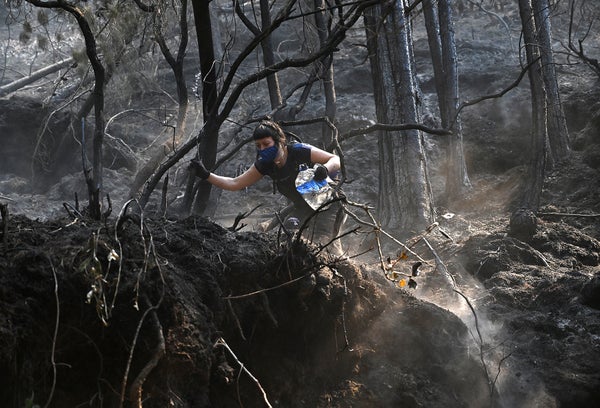With ecosystems ranging from Andean highlands to vast plains to the Amazon rain forest, Colombia—perched at the juncture of Central and South America—is home to nearly 10 percent of the world’s biodiversity. Its iconic species include dozens in the genus Espeletia: Seussian-looking plants commonly called frailejones, or “big monks.” Their rosettes of succulent, hairy leaves top off thick and spongy trunks that trap fog drifting in over the Andes’ unique and delicate high-altitude wetlands, called paramos.
Among the world’s fastest evolving ecosystems, the moist paramos stand in contrast to the arid climes of the rest of the Andes. Though they cover only 1.7 percent of Colombia, they provide the nation with 85 percent of its drinking water—much of it stored in the trunks of frailejones during the water cycle and later released into lakes and waterways. All this moisture has historically made the paramos resistant to the ignition and spread of wildfires.
But this year an unprecedented wildfire season has seen paramos catching fire across Colombia. One wildfire scorched more than 100 acres of frailejones in northeastern Colombia’s Berlin Paramo alone. More than 500 fires have burned across the country since 2024 began, consuming at least 42,000 acres of forest and grasslands and blanketing Colombia’s capital, Bogotá, in a pall of polluting smoke.
On supporting science journalism
If you're enjoying this article, consider supporting our award-winning journalism by subscribing. By purchasing a subscription you are helping to ensure the future of impactful stories about the discoveries and ideas shaping our world today.
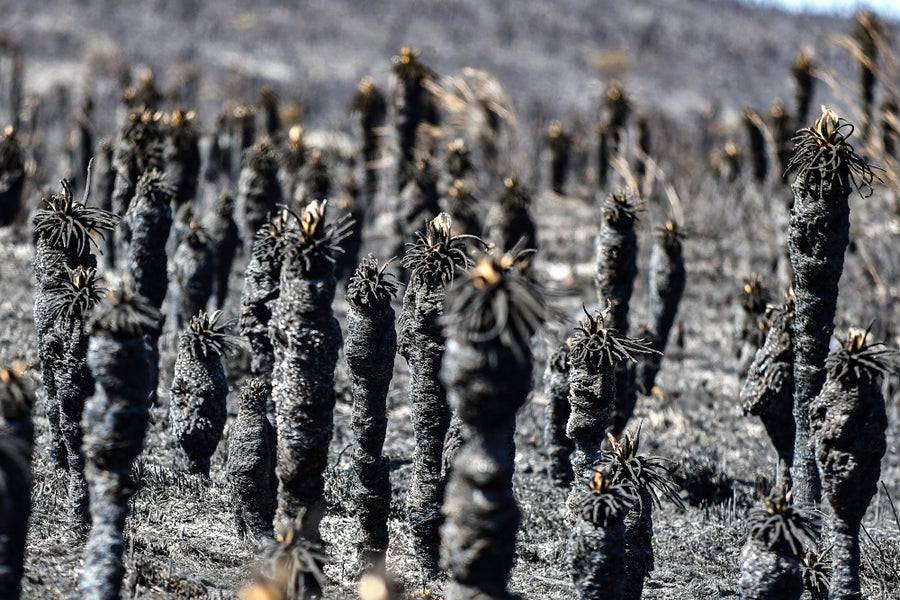
Burnt Espeletia plants are seen after a forest fire at the Berlin paramo in Santander department, Colombia on January 25, 2024. Credit: Miguel Vergel/AFP via Getty Images
Colombia’s wildfire season typically coincides with its December-to-March dry season, and the number of blazes and area burned vary from year to year. A 2022 study in Fire revieweddata from 2000 to 2020 and found that Colombia sees 100 to 300 wildfires in a typical January; this year marks the first time the month’s total has exceeded 500 fires since the nation began systematically collecting wildfire data in 1998. Though humans initially caused nearly all of this year’s fires, climate-driven heat and drought have made them worse than usual.
In the fragile paramos, especially, “the fire regime has changed,” says Mauricio Aguilar Garavito, a wildfire ecologist at Pontifical Xavierian University in Colombia. Analyses of ancient sediment layers show that in the past 10,000 years or so, the paramos of the Northern Andes burned about once every 100 to 1,000 years. “Now,” Aguilar Garavito says, “there are fires every two to 10 years.”
January 2024—at the height of the Southern Hemisphere summer—was Colombia’s hottest January in 30 years, said Ghisliane Echeverry Prieto, director of Colombia’s Institute of Hydrology, Meteorology and Environmental Studies, in a press briefing late last month. Temperatures reached record highs of 44 degrees Celsius (111 degrees Fahrenheit) in Honda, a small town in central Colombia flanked by four paramo ecosystems.
That heat is exacerbating a historic drought in the wider region because hotter temperatures cause the air to pull more moisture from plants. Drier plant matter, especially debris on forest floors, catches fire more easily. It also causes wildfires to burn more intensely and spread more rapidly.
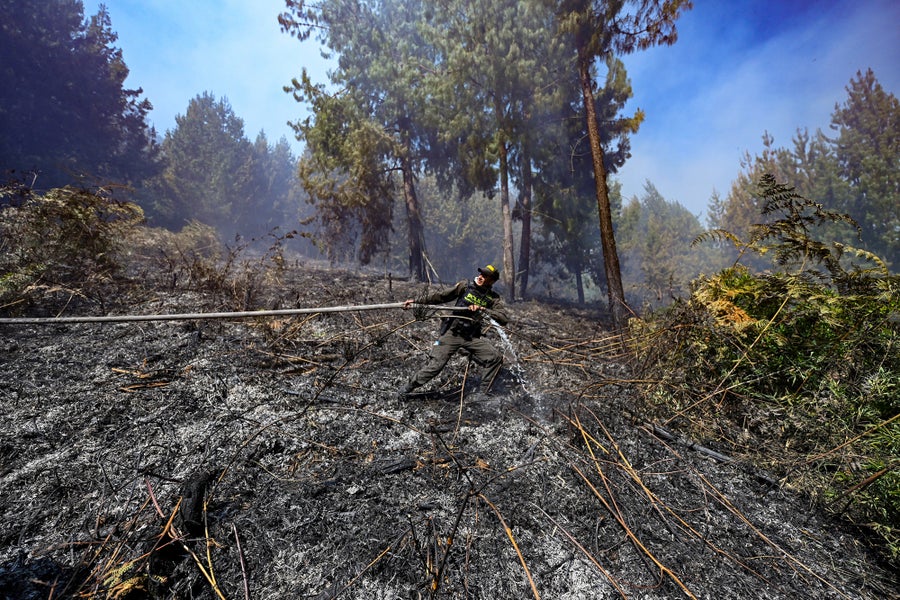
A police officer combats a forest fire in Nemocon, Colombia on January 24, 2024. About twenty forest fires had Bogota and several regions of Colombia on alert, amid temperature records linked in part to El Niño. Credit: LUIS ACOSTA/AFP via Getty Images
The current heat and drought can be linked to both climate change and the cyclical climate pattern known as El Niño, which features warmer-than-average waters across the eastern tropical Pacific Ocean. The heat that those waters release into the atmosphere causes a cascade of changes in weather patterns around the world. Increases in extreme heat are a hallmark of climate change, and the fingerprints of global warming have been found in numerous heat waves—including some that brought summerlike temperatures to parts of South America last winter.
A study published in late January by the World Weather Attribution (WWA) consortium of researchers also found that the drought now affecting the entire Amazon Basin is primarily being driven by climate change, with some amplification from El Niño. When considering both low rainfall and high evaporation rates, the drought has been made 30 times more likely by climate change, the researchers found.
The wildfire effects of drought, warming temperatures and El Niño are also being felt as far south as Chile’s Valparaíso Province, where devastating and deadly wildfires have consumed 64,000 acres and 14,000 homes and claimed the lives of more than 131 people since February 2 . But whereas El Niño’s influence on fire in Colombia is mainly from the drier weather it brings, its influence in Chile comes more from hotter temperatures, says Raúl Cordero Carrasco, a climate scientist and mechanical engineer at the University of Santiago, Chile.
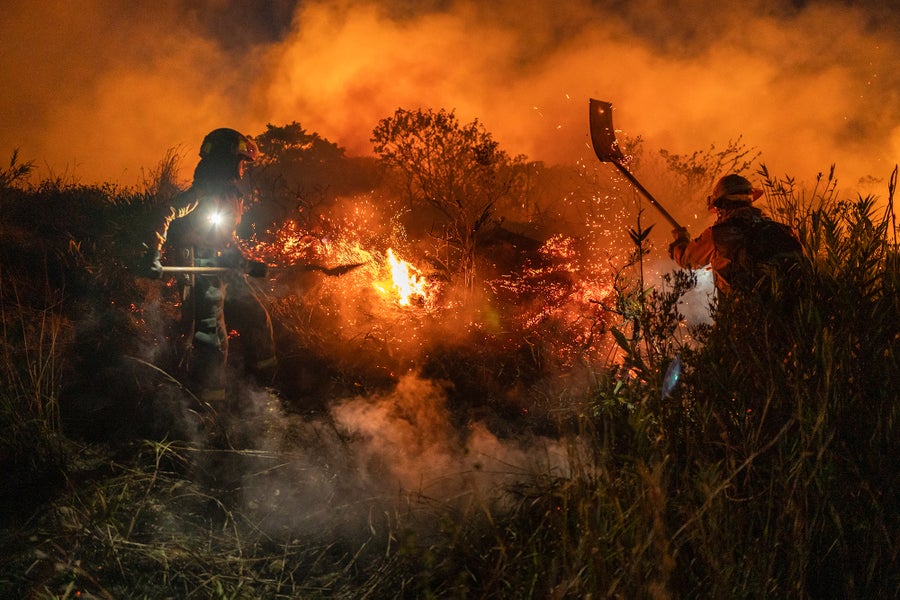
Rescuers help to extinguish a forest fire near the Doña Juana dump on January 24, 2024 in Bogota, Colombia. Over twenty forest fires were registered in Bogota and several regions of Colombia amid high temperature records. Credit: Diego Cuevas/Getty Images
Adding to the fire risk is the “degradation of Colombia’s ecosystems,” Aguilar Garavito says. The forests of Los Cerros Orientales, a mountain range just east of Bogotá, contain several invasive and fire-prone plant species, including eucalyptus trees and Pinus oocarpa, a pine tree native to Mexico and Central America. Fallen leaves and pine needles litter the understories of these dense mountainside forests, where this material becomes kindling amid soaring temperatures and desiccated air.
Aguilar Garavito says the nation’s “abysmal fire management” has also played a role in Colombia’s wildfires. Like in the U.S., authorities have focused on fire suppression rather than an integrated management strategy that uses controlled burns, which could help reduce the fuel available for wildfires.
Though recent rains have helped firefighters get some blazes under control, the coming months are expected to bring even hotter temperatures that will likely persist until the spring rainy season begins, Echeverry Prieto said during the press briefing.
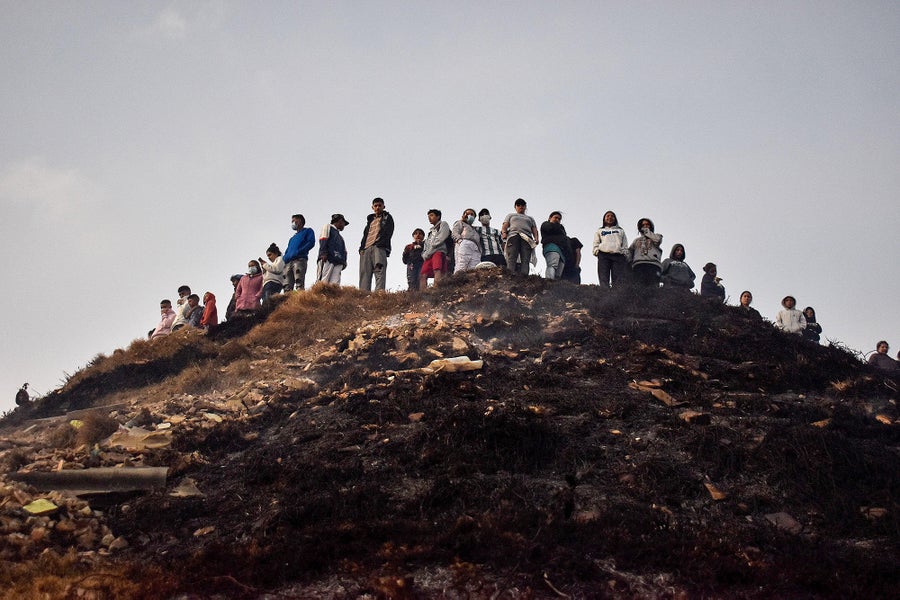
People who live close to a wildfire help firefighters by extinguishing the fires in the southern part of Bogota, Colombia during the fourth day of wildfires across the city on January 25, 2024. Credit: Cristian Bayona/Long Visual Press/Alamy Live News
Looking further into the future, Aguilar Garavito says wildfires in the paramos are likely to grow more frequent and severe in coming decades. A 2018 master’s thesis by Manuela Rueda Trujillo, then at the National University of Colombia at Medellín, found that Colombia’s paramos have been growing drier since the end of the last Ice Age. A study published in PLoS ONE in 2019 found that this trend has been amplified by anthropogenic climate change over recent decades, and that Andean paramos are expected to grow even drier in the decades to come. A 2022 study authored by Gwendolyn Peyre of the University of the Andes in Colombia and published in Frontiers in Ecology and Evolution found that 10 percent of the paramos’ endemic species “could undergo extinction by 2070.”
“Paramos are very special ecosystems in terms of their restricted distribution, their hydrologic functioning and the endemic species that live there, but they are also extremely fragile,” says Rueda Trujillo, who is now a Ph.D. candidate at Leiden University in the Netherlands. “Given this, more intense, frequent and extended fires in the long term certainly put at risk the persistence of paramos’ biodiversity—not only frailejones’—as well as their hydrologic functioning.”
Of the scorched remains of these unique ecosystems, she says, “it is really sad to see what is left after the fires.”
This article is also available in Spanish.
